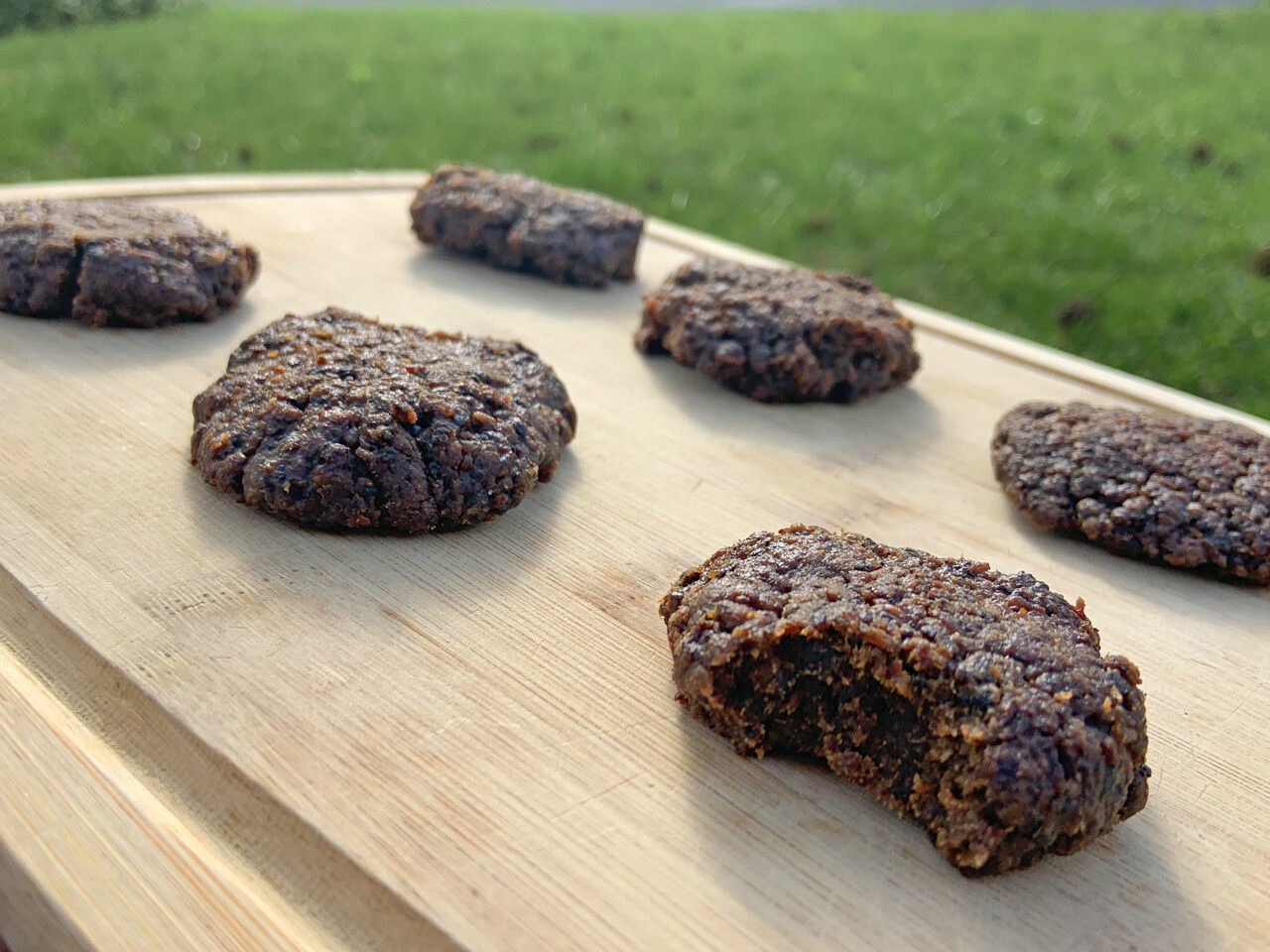Ingredients
910 g lean raw meat (beef; bison, venison, caribou, or moose meat, if available)45 g berries (blueberries, cranberries, Saskatoon berries - feel free to experiment with different berries)
25 g non-hydrogenated lard
sugar (optional)
- Assuming you don't have a food dehydrator (who does?), you will have to dry out the berries and the meat in the oven. Break the skin of the berries by either slicing or poking them to allow their juice to evaporate, then place the fruit on a parchment paper-lined baking sheet and put it in an oven pre-set to 77 degrees C. The berries will be done when they’re completely dry with no juice left in them, so keep an eye on them, and remove them from the oven when they are done.
- Chill the meat you plan to use in the freezer for an hour, then cut it into strips, going against the grain. Place the strips on another baking sheet lined with parchment paper, then place it in the oven already set at a low temperature. It may take up to 12 hours for the meat to fully dry depending on how thick it is, so plan accordingly. You'll know the meat is ready when it’s dry but still pliable.
NOTE: Don't substitute beef jerky to save time, as it will taste awful and it defeats the purpose of making pemmican - the Indigenous did not have access to nitrates. - Once the meat is ready, grind it into a powder with a food processor or, for a more authentic feel, a mortar, and pestle. Repeat with the berries and combine the powders in a bowl. Melt the lard, then add it to the bowl and mix until it’s sticky enough to be formed into shapes. If the mixture is still too powdery, add another 10 g of melted lard. Sweeten to taste with 10 g sugar if desired. Shape the pemmican into patties and let them dry before eating.



No comments:
Post a Comment